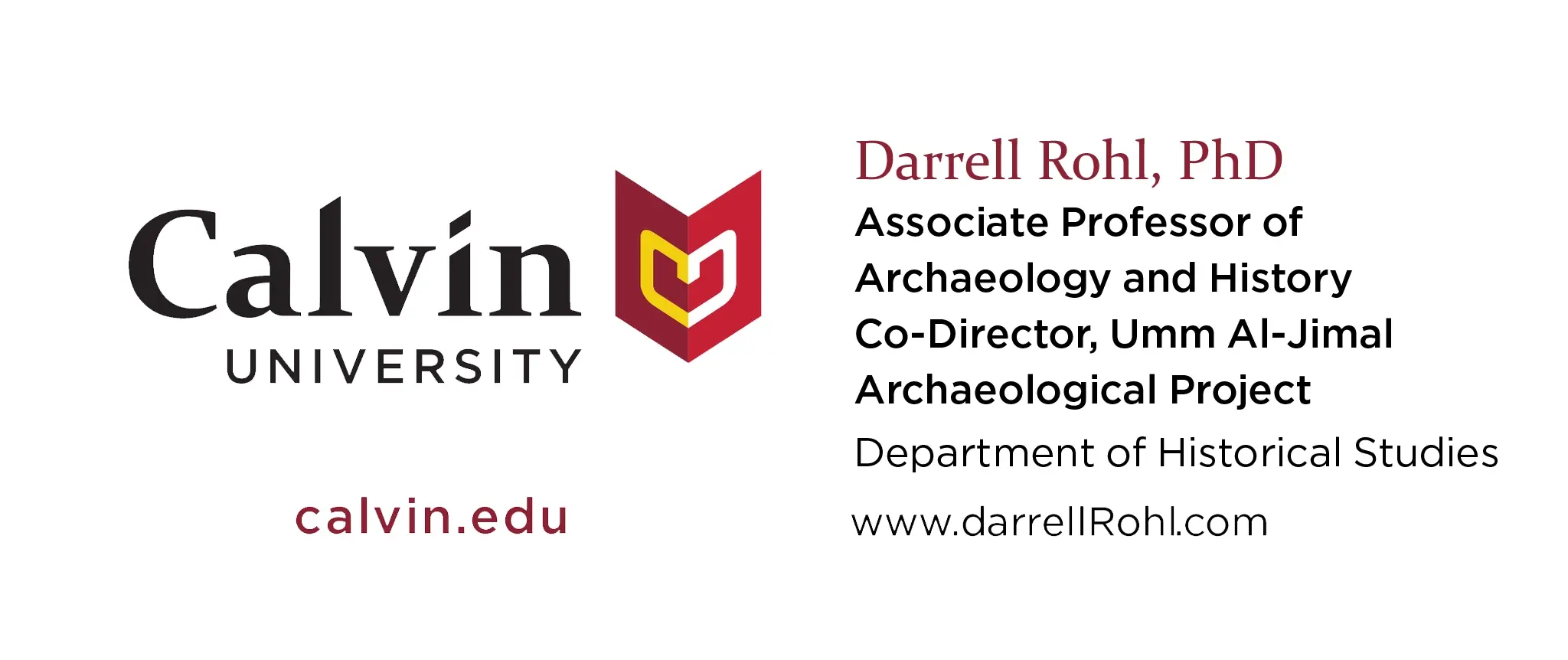
Archaeology & Heritage | The Past, the Present, People, and Place
From Scotland's Antonine Wall to Jordan's Umm Al-Jimal—both UNESCO World Heritage sites—I explore how the ruins of the past still matter today.
I am an archaeologist and heritage scholar whose work explores how people across time have shaped, remembered, and reimagined the places they call home. My fieldwork stretches from Scotland's Antonine Wall to the basalt ruins of Umm Al-Jimal in Jordan—both UNESCO World Heritage sites. Alongside excavation and conservation, I investigate how the traces of the past—whether ruins, inscriptions, or landscapes—continue to inform present communities, cultural identities, and global heritage debates.
I've had various online presences for almost 30 years but this site came together during the 2024–25 academic year, when I was on sabbatical in Jordan as a Fulbright U.S. Scholar; the material prioritizes newer thoughts and work but also re-examines some of my earlier work, drawing on the 20 years in which I've been an active student and scholar of anthropological archaeology, history, and the meanings and challenges of heritage in our contemporary present. The views and perspectives are my own and do not necessarily reflect those of my employers, project colleagues, or other organizations and communities with which I am affiliated.
This page contains the following key sections (click a link to jump to that section):
Research and Fieldwork
My research integrates archaeological excavation, heritage management, and digital infrastructures to understand how human communities endure, adapt, and remember across time.
Umm Al-Jimal Archaeological Project (Jordan)
As co-director of this long-standing international collaboration, I oversee excavation, conservation, and digital documentation of a classical (Nabataean and Roman) and late antique (Byzantine and Early Islamic) town that was inscribed on the UNESCO World Heritage List in 2024. My work there combines 3D scanning, GIS, and knowledge-graph modeling with close collaboration among Jordanian and international colleagues, students, and community partners.
Roman Frontiers in Britain
In Scotland and northern England, I have led research or conducted fieldwork on the Antonine Wall—a UNESCO World Heritage Site—and Roman Binchester, exploring how empire and local communities interacted at the edge of Roman power.
Chorography and the Archaeology of Place
Archaeology is not only about recovering the past but about asking how its remains live on in the present.
A long-standing focus of my scholarship, this approach emphasizes the lived textures of places—the intersections of memory, imagination, and material traces. My writings have shaped recent debates on place-centered archaeology and continue to influence works on frontiers, landscapes, heritage, design, and literature.
The Wellespring Project
Currently in development as part of my teaching in the digital humanities, this project steps away from my usual archaeology and heritage focus to explore meaning, networks, and reception in contemporary art and culture through the application of digital tools and methods in the analysis of singer-songwriter Jesse Welles.
Across these projects, my aim is not only to recover the ancient past but also to ask how its remains live on in the present and what responsibilities we bear toward the communities who engage them.
Teaching and Mentoring
I believe that archaeology is best learned by doing. In my classrooms and in the field, students move beyond textbooks into active participation in research, digital projects, and heritage debates.
Courses, Field Schools, and Student Projects
At Calvin University and Canterbury Christ Church University, I have designed and taught courses ranging from Introduction to Archaeology and World Heritage to Digital Humanities and Religion & Society in the Middle East. I lead a biennial study-abroad field school in Jordan where students excavate, travel widely, and produce collaborative research outputs—including co-authored publications and a student-produced documentary film.
Mentoring the Next Generation
Mentorship is central to my work: I have supervised Ph.D. dissertations and undergraduate theses, partnered with graduate GIS cohorts on digital mapping, spatial analysis, and machine learning feature classification projects, and guided students into careers in archaeology, heritage management, and museum work. For me, teaching is not separate from research—it is how the next generation of scholars and citizens learns to see the past as vital to our shared present.
Public Scholarship and Engagement
Who gets to tell the story of ruins? How is heritage shared? These questions matter for all of us.
Archaeology matters beyond the academy. My work seeks to bring the insights of the past into today's most pressing conversations about identity, belonging, and cultural heritage.
Media and Public Appearances
I have appeared in international and regional media—including The Jordan Times, FOX 17 News (Grand Rapids, MI), and Spark Magazine—and on podcasts such as the BioLogos Foundation's Language of God. I give invited lectures for universities, cultural organizations, and community groups in the U.S., Jordan, and beyond.
Stories for Wider Audiences
My forthcoming trade book, Mother of Camels, Mother of Beauty: An Archaeology of Place at Umm Al-Jimal, Jordan, tells the layered story of one desert town across two millennia, weaving together archaeological discoveries, historical texts, and the voices of local residents. Like much of my work, it asks who gets to tell the story of ruins, how heritage is shared, and why these questions matter for all of us.
Through these efforts—whether in the classroom, the field, or public platforms—I aim to build bridges between scholars, students, and wider audiences, fostering deeper understanding of the human past and its enduring significance.
An Invitation
This site is an invitation to explore how the traces of the past shape our shared present and possible futures.
This site gathers my research, teaching, and public work in one place. It is meant to be a resource, an archive, and an invitation. I welcome colleagues, students, and community members—whether near or far—to join in exploring how the traces of the past continue to shape our shared present and possible futures.

